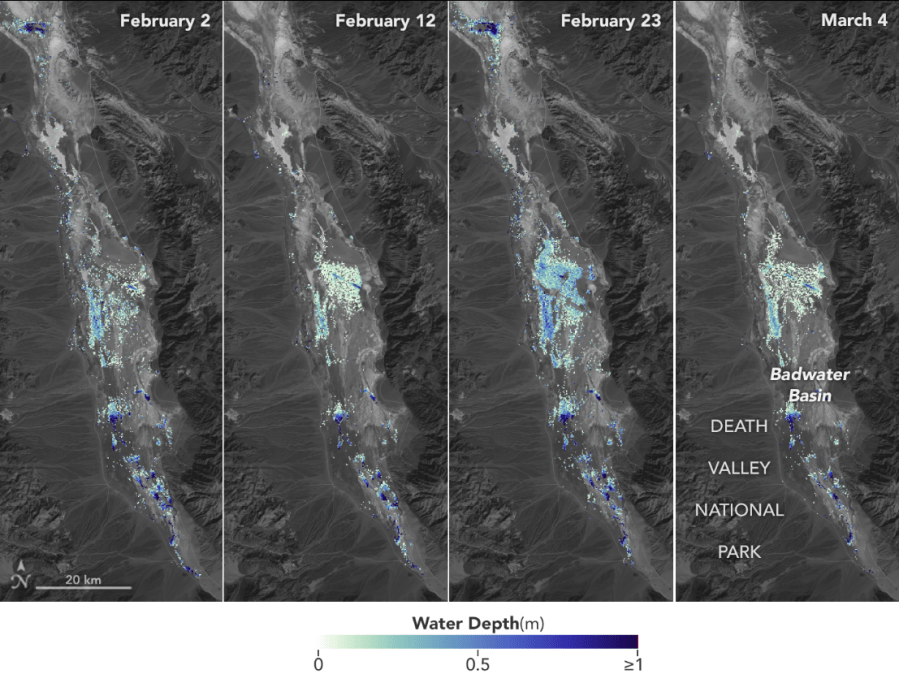NASA images show how big Death Valley’s ‘rare’ lake got this winter

SAN DIEGO (KSWB/KUSI) — The driest place in North America had a lake big enough to kayak in this past winter, and NASA has released data on how big the rare lake actually got.
Late last year, a rare lake, dubbed Lake Manly, began forming in the Badwater Basin area of California’s Death Valley.
“You might think with no drain to the sea that Death Valley would always have a lake,” park ranger Abby Wines said in a February press release from the National Park Service. “But this is an extremely rare event. Normally, the amount of water flowing in is much less than the evaporation rate.”
Torrential rains in California make way for rare lake in Death Valley National Park
Death Valley National Park, which normally averages about two inches of rain per year, received 4.9 inches between late 2023 and early 2024, with the surrounding mountains receiving greater amounts of rain, the National Park Service reports. Hurricane Hilary in August and the atmospheric river storms in early February were the biggest rain contributors in Death Valley.
NASA’s U.S.-French Surface Water and Ocean Topography (SWOT) satellite, which launched in December 2022 from Vandenberg Space Force Base in central California, found that water depths in the temporary lake ranged from about 3 feet to less than 1.5 feet over the course of about six weeks.
The SWOT satellite also found that right after a series of storms in early February, the temporary lake was about 6 miles long and 3 miles wide.
To estimate the depth of the lake, NASA researchers used water level data collected by SWOT and subtracted corresponding U.S. Geological Survey land elevation information for Badwater Basin.
“This is a really cool example of how SWOT can track how unique lake systems work,” said Tamlin Pavelsky, the NASA freshwater science lead for SWOT and a hydrologist at the University of North Carolina, Chapel Hill.
California’s Death Valley reaches 128 degrees
The shallow lake was open to kayaking for a short time, but has since closed to all boating after the water levels dropped, the National Park Service said in an update Friday. Lake Manly has been evaporating and is now only a few inches deep. It’s only accessible over rough, uneven salt and mud with no trail available.
Some of the surrounding salt flats were also damaged by people dragging watercraft to Lake Manly.
Did California really have a ‘super bloom’ this spring? An expert weighs in
Visitors to Death Valley and Lake Manly are allowed to walk in the water but the National Park Service asks that people do not walk in muddy areas where they will leave footprints as they can last for years.
The National Park Service noted there are also wildflowers blooming in Death Valley National Park, with the best places to view them being Panamint Valley and east of Furnace Creek on CA-127 and NV-373.
For the latest news, weather, sports, and streaming video, head to PIX11.


